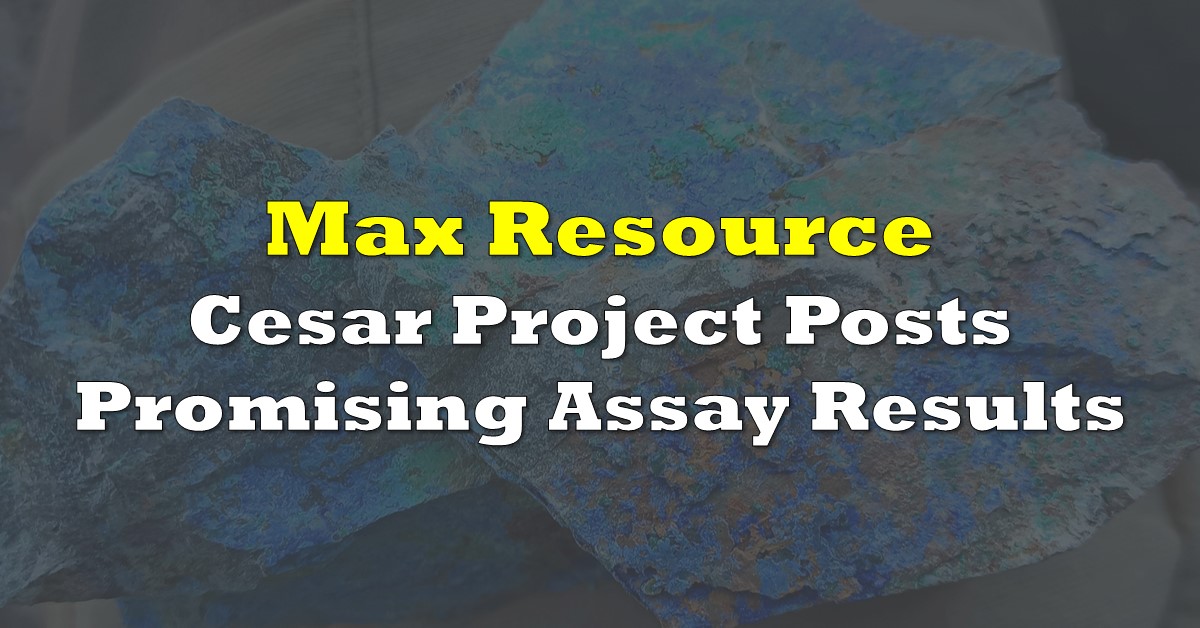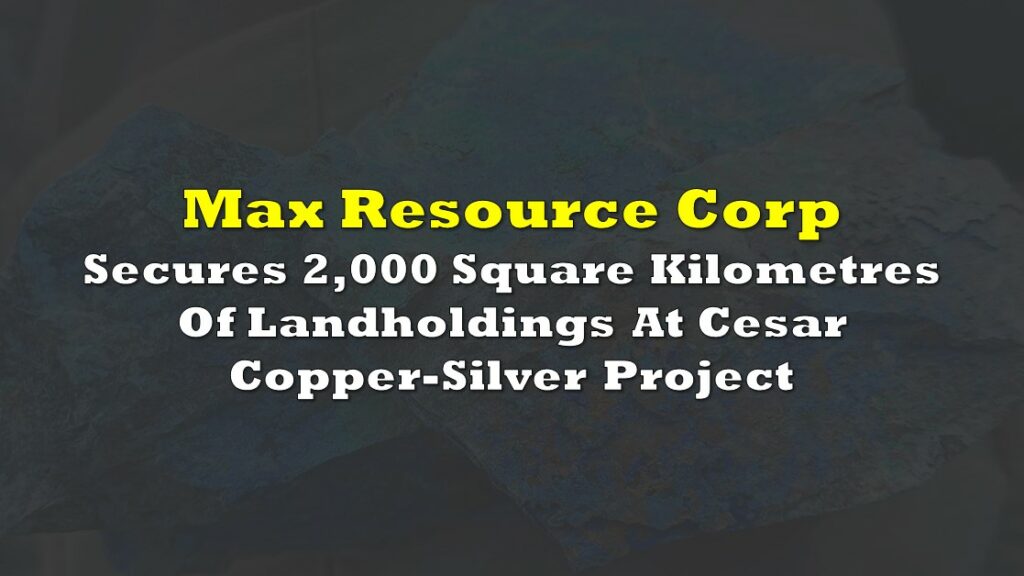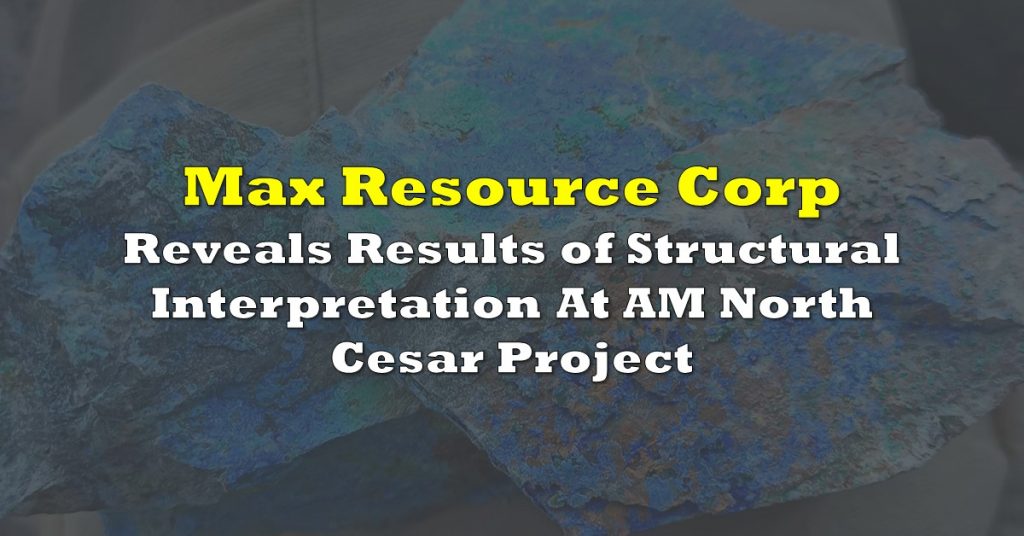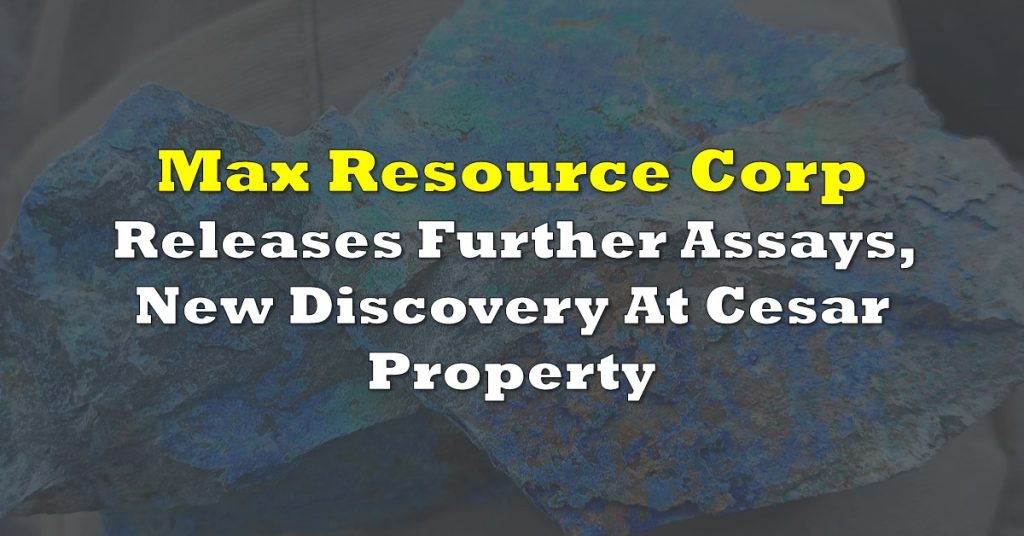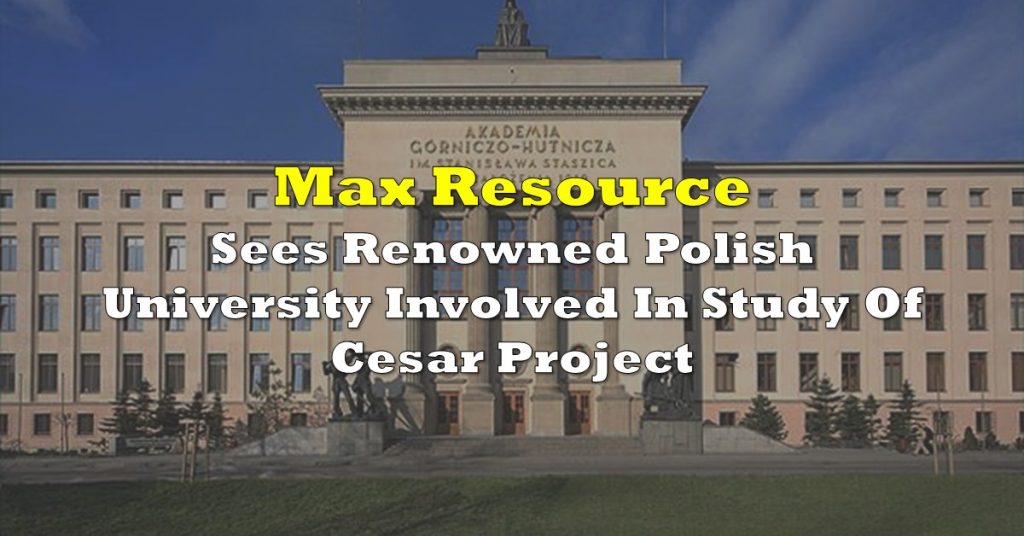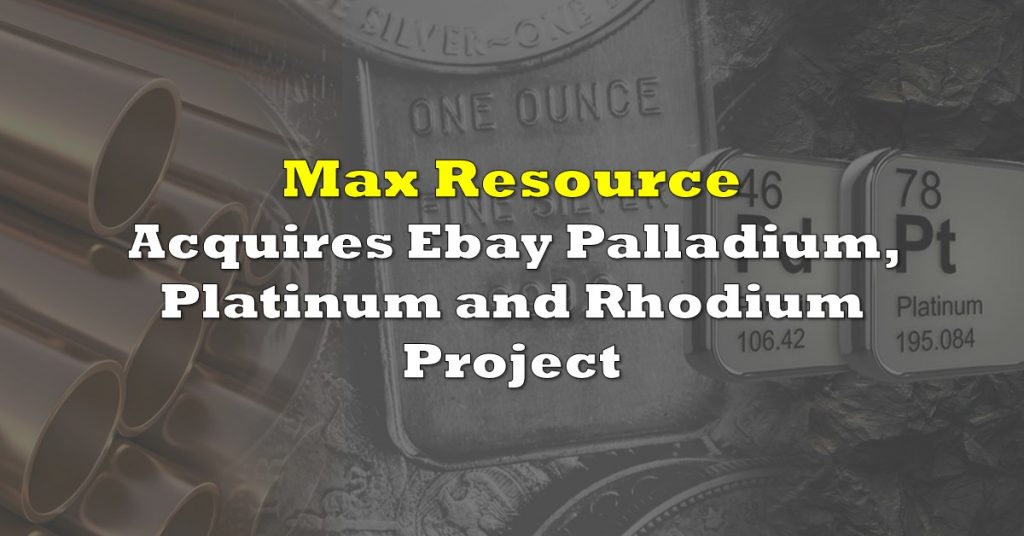Last week, Max Resource Corp (TSXV: MXR) released data on a discovery the company had at its Cesar project, which is located roughly 420 kilometers north of Bogota, Colombia. Specifically, the discovery was related to a second location on the project, approximately 40 kilometers north of the first assay location and provided early stage promising results for the copper and silver project.

Now, we’re aware that typically, junior miners are often viewed as being too complicated to understand for retail investors. With many new investors hitting the markets as a result of the gold rush in cannabis, it’s only natural that many new investors have a genuine lack of understanding of the data involved in that of junior mining. So we’ll break this down in simplistic terms to make understanding the results a bit easier.
The assay results are of rock chip sample material that have been taken in a continuous line across the exposed mineralized structure (referred to as an outcrop). on the site, at a location that is referred to as “AM North.” Specifically, the results were from “AMN-1”outcrop, which is simply the first location that Max Resource poked around in at AM North to see if there was significant mineralization in the ground. The company is using the rock chip sampling method in the early stage, as opposed to drilling, as a result of extensive mineralization found on the surface.
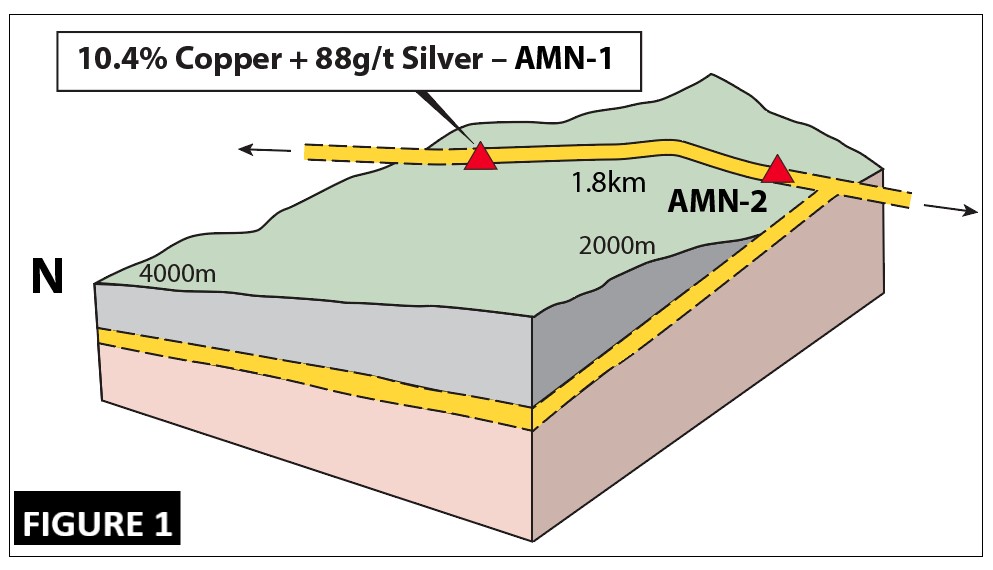
These rock chip samples are essentially used to identify potential mineral structures, the continuity of thickness of minerals, and the length of the strike. I.e., the samples are used as a means of identifying what is potentially in the ground in the form of a mineral structure. When analyzing them, geologists are looking for clues that point to the potential of these valuable minerals existing in large quantities, to make further exploration worthwhile. In the case of Max, they’re in search of copper and silver on this property.
In the case of MXR’s AMN-1 chip sample, the company used a 1 metre continuous rock sample, which provided assay results demonstrating copper content of 10.4%, as well as signs of silver being present in quantities of 88 grams per ton of rock. While early stage, the results are promising, and the second set of assay results – referred to as AMN-2 – are expected to be released soon. The samples taken from AMN-2 are from a location 1.8 kilometers westerly of the first AM North location, and are expected to provide further clarity on current mineralization on the Cesar copper and silver project.
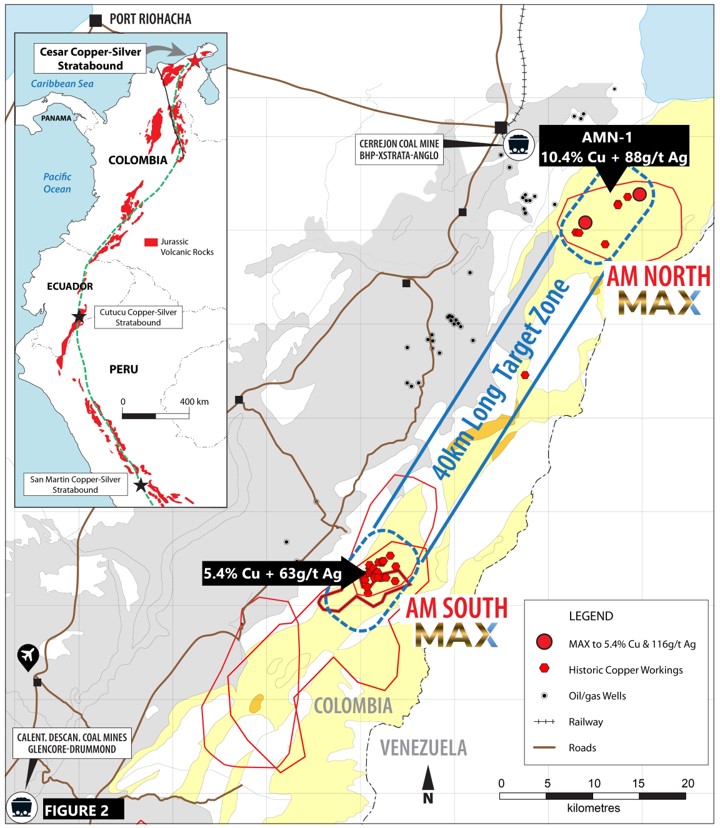
Forty kilometers to the south, “AM South” has provided strong early results as well. Also taken via rock chip samples, early assay results have indicated copper content of 5.4%, with silver being present at a rate of 63 grams per ton, or g/t. Both the AM North and AM South results are stated to be “open-ended”, which in layman terms means that they aren’t quite yet sure where the mineral structure ends, but it is believed to stretch across at minimum the specified distance. In the case of AM South, results have shown that they are open-ended over three individual locations which have a combined stretch of 5 km, while at AM North, this stretch is 1.8 km currently. Together, the data currently points to a large potential structure existing on the Cesar property, however further exploratory work is required to confirm this.
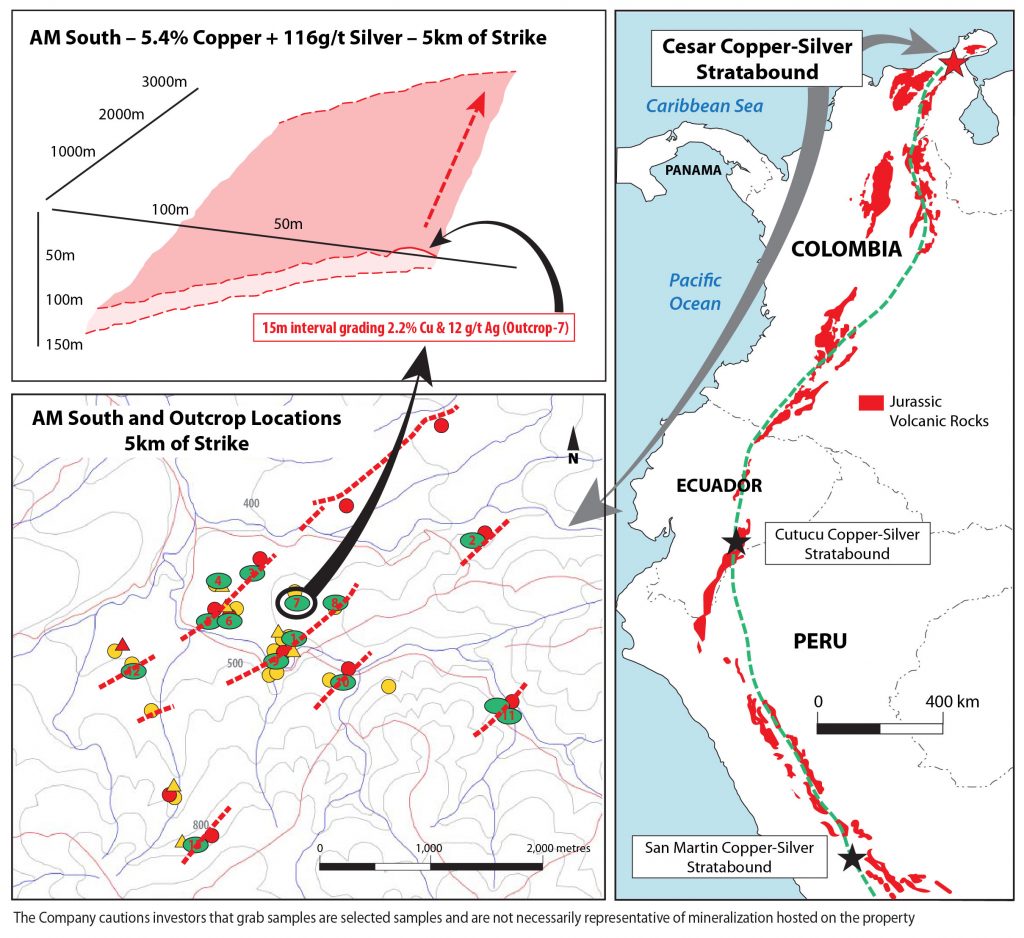
The structure itself is believed to be of similar style mineralization to that of a current mining project in Poland, referred to as Kupferschiefer, based on early geological modelling. That project is referred to as having a continuous structure known as a “sedimentary stratabound system,”. and based on the US Geological Survey, The Kupferschiefer orebody has an average copper grade of 2% equivalent (copper plus associated silver credits), the shape and orientation appears similar to a large sub-horizontal sheet, 2 meters thick that extends horizontally and downwards for many, many kilometres. The Cesar project is believed to have a similar structure, and is represented visibly as follows, however it is cautioned that the mineral results of Poland project is not necessarily indicative of the mineralization for MXR’s Cesar project.

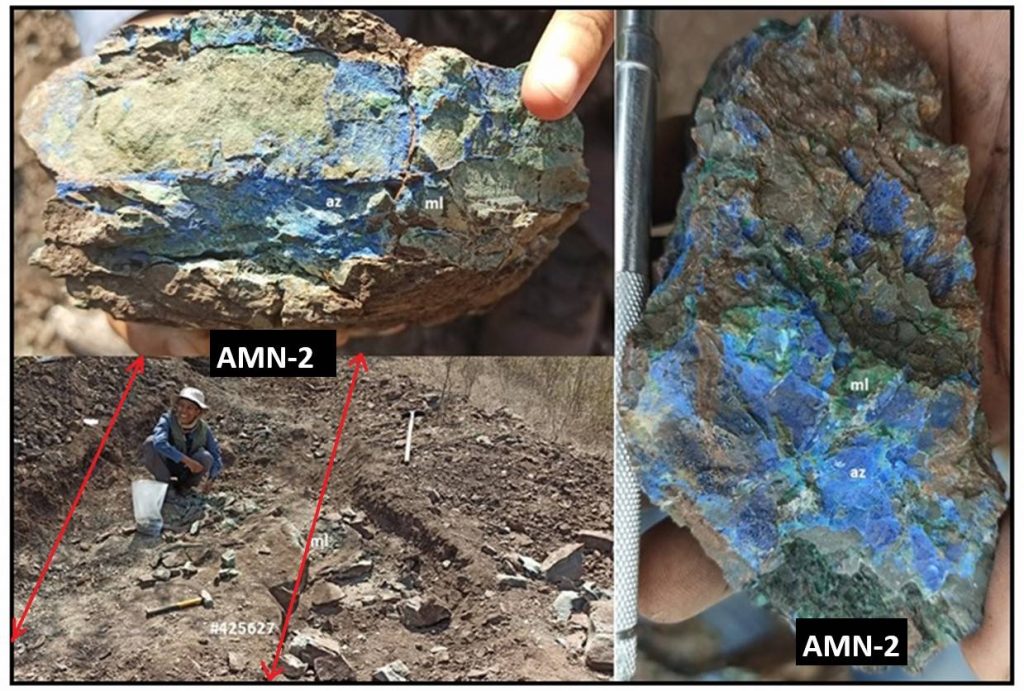
Now, lets talk the potential for feasibility. While hearing certain grades for mineral presence is good, the data seems largely irrelevant without proper context. If you don’t know what grades are required to make a potential discovery feasible, then there’s just no sense in looking, right? In terms of copper, there’s a slight range in terms of feasibility. Several sources, including Investing News, Open Text BC, and Copper.org indicate that depending on jurisdiction, anywhere from 0.5% copper to 1.0% copper can be feasible depending on the size of the structure, quality of the ore, etc. However more, obviously, is better.
The long term potential is also dependent on nearby infrastructure. In the case of the Cesar project, the location of the project is along a historic 120-km copper belt that is within an oil-gas and coal mining district. The region has extensive infrastructure for mining operations, including ports, railways, townships, and roadways. As a result, the goal of the Cesar project is to unlock the potential of the district as an up and coming world class copper and silver producing region.
While early stage results appear to be extremely promising for Max Resource’s Cesar project, further exploratory work needs to be conducted to further determine the mineralization on the property. While current data suggests the potential for a bonanza, more results are required to confirm this. Assay results for AMN-2 are currently pending, and are anticipated to be released shortly.
Max Resource Corp last traded at $0.08 on the TSX Venture.
FULL DISCLOSURE: Max Resource Corp is a client of Canacom Group, the parent company of The Deep Dive. The author has been compensated to cover Max Resource Corp on The Deep Dive, with The Deep Dive having full editorial control. Not a recommendation to buy or sell. Always do additional research and consult a professional before purchasing a security.

